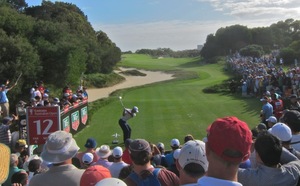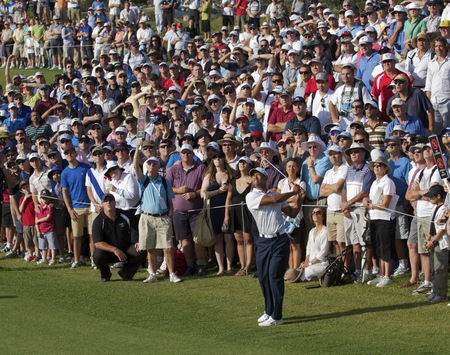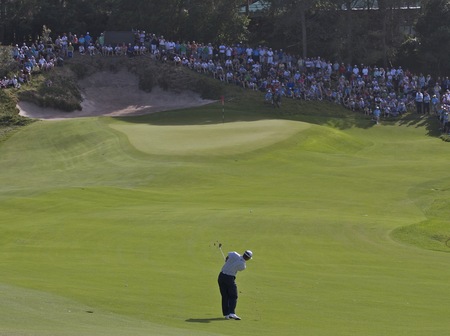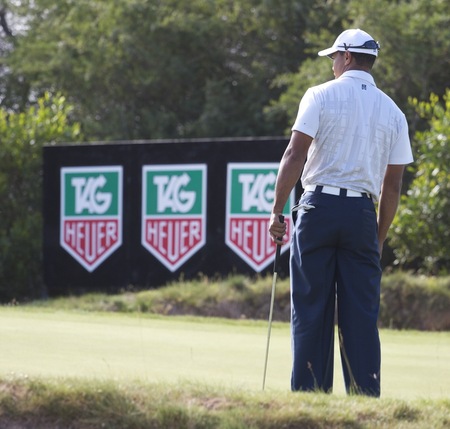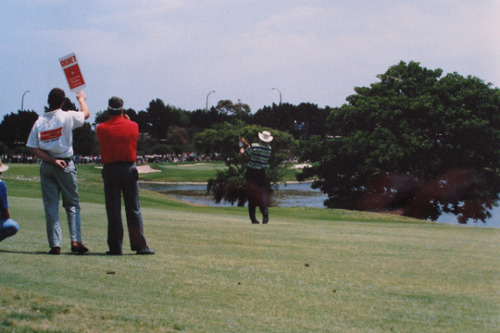 Darius Oliver has authored three of my favorite reference books, most notably the stunning Planet Golf and Planet Golf USA books, the product of five years seeing and playing courses across the globe, studying more than 900 layouts in 45 countries. He is currently the architecture editor of Australian Golf Digest magazine, operator of the Planet Golf website and a design consultant.
Darius Oliver has authored three of my favorite reference books, most notably the stunning Planet Golf and Planet Golf USA books, the product of five years seeing and playing courses across the globe, studying more than 900 layouts in 45 countries. He is currently the architecture editor of Australian Golf Digest magazine, operator of the Planet Golf website and a design consultant.
In preparation for the Presidents Cup, I've asked Oliver about planning a trip to Australia, the state of the game here and about the real star this week, Royal Melbourne.
GS: Golf in America is struggling with our economic woes, how would you characterize the health of the sport in Australia?
DO: In similar terms, because many second-tier clubs are struggling to attract members and the professional game has been on the slide for years here. They are both related. Back in the 1980s and 90s, when Greg Norman was in his peak, golf was a mainstream sport in Australia. We had a healthy professional circuit and were able to generate plenty of media coverage.
Apart from walking, running and cycling, golf is still the most popular game in Australia, so plenty of people play the game but the media has lost interest and clubs are finding that attracting and retaining members is becoming more and more difficult.
There are many factors for the downturn in Australia, and unlike America those don’t really include economic issues. It’s more about our changing lifestyles, the increased time pressures on family men and women and more competition from other sports. Also, the fact that our best players are largely foreign to the average sports fan in Australia is a major concern.
I point the finger of blame at golf administrators in Australia, who are largely disconnected from those of us who picked up the game during the Norman era and have been largely devoid of ideas and leadership in the recent decades. We have great courses here, a perfect golf climate and a stack of high-quality professionals. So the game has solid fundamentals, it’s just that recovery seems unlikely without a serious clean-out at the upper levels of administration.
GS: A golfer and spouse have 7-10 days, a budget and want to make a trip to Australia that blends the Royal and Ancient with sightseeing? Could you give us a dream trip in terms of courses, sights and maybe suggestions on how to get on private courses?
DO: Firstly private clubs in Australia aren’t difficult to access if you are a member of an international club, and reasonably flexible. You just need to write to the club and request manager introduced access, and then be prepared to pay what is often a fairly inflated green fee.
But to answer the question of where to play and what to see, you’d have to start with Sydney, which is clearly one of the most beautiful cities in the world. I’d suggest a round at the NSW Golf Club and a day sightseeing in the city. From Sydney you would fly south to Melbourne and Tasmania. Barnbougle Dunes in Tasmania is now a must-play destination, with two wonderful courses that you could either play once or twice over a two day, one-night visit. The rest of the time should be spent around Melbourne and its surrounding Peninsulas.
In terms of golf, it depends how keen you are but you should include Royal Melbourne (West) and Kingston Heath at an absolute minimum. You can add others on the Sandbelt, or head to the Mornington Peninsula to check out the wineries, the popular beach towns and golf courses like the Moonah at The National and Tom Doak’s St Andrews Beach. On the other side of the bay is the Bellarine Peninsula, which is only a short ferry ride from Sorrento on the Mornington side. The ferry takes you close to Barwon Heads and its charming old links. If you want to see kangaroos you could then play Anglesea as well, before embarking on Victoria’s world-famous Great Ocean Road drive right along the southern coast. At the end of the Great Ocean road is the small fishing town of Port Fairy, which also has its own fun links.
That’s probably more than 10 days in total, so the other option is to stay in Melbourne the whole time and play other Sandbelt courses like Victoria, Metropolitan, Commonwealth, Woodlands and Peninsula. You could then include the odd day trip as well. Phillip Island is always popular for its nightly penguin parade and the city of Melbourne itself is an under-rated gem for those who like walking around cosmopolitan cities.
I’m massively passionate about Australian golf and always struggle to limit itineraries here to 7-10 days because the country is so big and there is so much to see. No matter how long you stay there are things you are going to miss, whether great golf courses or attractions like the Great Barrier Reef, the Whitsunday Islands, Uluru, Kakadu, Margaret River etc. If golf is your priority though, then three nights between Sydney and Barnbougle and the rest (4-7) around Melbourne is about right.
GS: You recently wrote a piece about the "resuscitation of Royal Melbourne" where you recount how the club's reaction to Ernie's 60 in 2004 led to a lot of positive improvements. But considering how much has changed in just seven years, won't players still find Royal Melbourne short or even shorter?
DO: The short answer is yes, that Royal Melbourne will still play short for the Presidents Cup. And it’s not a difficult course either, but that has never been part of the allure of the place.
What happened after Ernie Els shot his 60 was more about the climate here in Victoria, than any need to future proof or toughen the golf course. The new fairway grass, the broader leafed Legend couch, will eventually become more drought resistant than its native cousins, and it has the added benefit, if you like, of reducing roll on fairways and slowing down the bigger hitters. But the reality is that RM is a short course, and it’s the greens that protect it from the technological advances made over recent years. The greens are now better (ie firmer and bouncier) than in the last decade thanks to the new stormwater harvesting system that has not only increased the supply of water but also improved its quality.
In my view, the current set-up is perfect for the Presidents Cup and for other professional events in the future. If I were a member though, I’d lament the loss of the native couch because playing RM with tight, bouncy fairways was incredible.
GS: You speak highly of the special Presidents Cup routing, while others have groaned about it. Tell us why you think this composite course works.
DO: I have to add a caveat here, and say that while I prefer the 2011 Presidents Cup routing to the previous Composite routing, an earlier Composite version was clearly the best. The last incarnation ended with seven straight par fours and, like the Presidents Cup plan, was created to ensure the final few holes were close to the clubhouse, to help with spectator flow. So if we accept that organizers now need the 16th and 18th to be near the clubhouse, then this newest version is better balanced and seems to work well. Plus it includes the brilliant par three 16th on the East Course, in place of the harder but far less impressive 4th.
As good as it may be, an earlier Composite course that was used throughout the 1980s and 90s, to me, was hands down the best layout ever in this country. That layout started with 1 West, which is a somewhat uninspiring hole but ideal as an opener. This year it will play as the 17th hole. The flow of the older course, with its par 3, par 5, par 4 finish, seemed the perfect way to showcase the holes at Royal Melbourne. Plus you end with 18 East and all the drama of that wonderful green complex.




